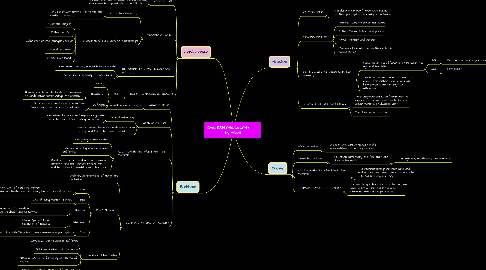
1. Confucianism
1.1. WHAT IS LIFE
1.1.1. To reach a status of ultimate understanding of one self both physically and spiritually
1.2. MEANING OF LIFE
1.2.1. To achieve Harmony
1.2.1.1. To Coexist with nature, life, spirits and reality in harmony
1.2.2. To understand the 5 cardinal Relationships
1.2.2.1. Ruler and Subject
1.2.2.2. Father and Son
1.2.2.3. Elder brother and younger brother
1.2.2.4. Husband and wife
1.2.2.5. Friend and Friend
1.3. RELATIONSHIP BETWEEN MIND AND MATTER
1.3.1. Treat other the way you wish to be treated
1.3.2. Selflessness, specially towards family.
1.4. ULTIMATE NATURE OF REALITY
1.4.1. Ren
1.4.1.1. Mercy
1.4.1.2. Humanity
1.4.1.2.1. Humanity is the ability to show compassion towards other human beings and animals.
1.4.1.3. Love
2. Buddhism
2.1. WHAT IT SELF
2.1.1. Perception of self is ever-changing
2.1.1.1. Cultural opinions and biases creates the illusion about our perception of self.
2.2. MEANING OF LIFE
2.2.1. To end suffering
2.2.1.1. We suffer because we keep striving after things that do not give lasting happiness.
2.2.2. People suffer because conditioned to see change and fail to be enlightenment
2.3. RELATIONSHIP BETWEEN MIND AND MATTER
2.3.1. Everything is interrelated
2.3.2. Hate, greed and ignorance causes suffering.
2.3.3. Buddhism rejects, the idea of an individual, immortal soul and fosters instead the buddhist belief in possibility of a harmony
2.4. ULTIMATE NATURE OF REALITY
2.4.1. Ordinary appearances of things are an illusion
2.4.2. The 5 Niyamas
2.4.2.1. Utu
2.4.2.1.1. Natural Law of non-living matter -Seasons, climate, weather, everything nature related etc.
2.4.2.2. Bija
2.4.2.2.1. Law of living matter/ Biology
2.4.2.3. Kamma
2.4.2.3.1. Law of moral causation -Negative deeds lead to Karma
2.4.2.4. Dhamma
2.4.2.4.1. Natural Spiritual Law -Teachings of Buddha
2.4.2.5. Cita
2.4.2.5.1. Law of mental activity-Thoughts, consciousness and perceptions
2.4.3. The Four Noble Truths
2.4.3.1. Samudaya- Desire causes suffering
2.4.3.2. Dukkha- Suffering in the world
2.4.3.3. Nirodha- Ending suffering by getting rid of desires
2.4.3.4. Marga- The path to ending suffering exists
3. Hinduism
3.1. WHAT IS SELF
3.1.1. To understand oneself they have realize that their perception of reality is an illusion.
3.2. MEANING OF LIFE
3.2.1. Dharma - Live by ethics and duties
3.2.2. Artha - To work hard and prosper
3.2.3. Kama - Passion and Desires
3.2.4. Moksha - Liberation from the cycle of reincarnation
3.3. RELATIONSHIP BETWEEN MIND AND MATTER
3.3.1. Focusing on the differentiation between the ego and the Self
3.3.1.1. Self
3.3.1.1.1. Being aware of our purpose in the universe
3.3.1.2. Ego
3.3.1.2.1. Personality
3.3.2. The body and mind are not polar to each other rather synonymous with both physical and non-physical attributes.
3.4. ULTIMATE NATURE OF REALITY
3.4.1. True enlightenment is Self-realisation, to experience the supreme reality through either monistic or dualistic view.
3.4.2. The Universe is Brahman
4. Taoism
4.1. WHAT IS SELF
4.1.1. -To adapt with circumstances in life -To be selfless and not egotistical
4.2. MEANING OF LIFE
4.2.1. To attain immortality and find ones ideal place in the world
4.2.1.1. - Through diet, mindfulness and exercise.
4.3. RELATIONSHIP BETWEEN MIND AND MATTER
4.3.1. The interrelationship between mind and matter rely one ones choice to be content with not knowing/mystery.
4.4. ULTIMATE NATURE OF REALITY
4.4.1. In order to gain harmony with the Tao, we have to live a minimalist life and not intervene with natural processes.
